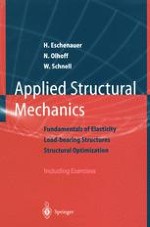In view of the growing importance of product liability and the demand for fulfillment of extreme specifications for new products, this book provides the basic tools for establishing model equations in structural mechanics. Additionally, it illustrates the transition and interrelation between structural mechanics and structural optimization. Nowadays, this new direction is extremely important for more efficiency in the design process. The book is divided into four parts covering the fundamentals of elasticity, plane and curved load-bearing structures and structural optimization. Each part contains numerous problems and solutions, which will provide the student with the basic tools from the field of elasticity theory and assist the professional engineer in solving problems.
